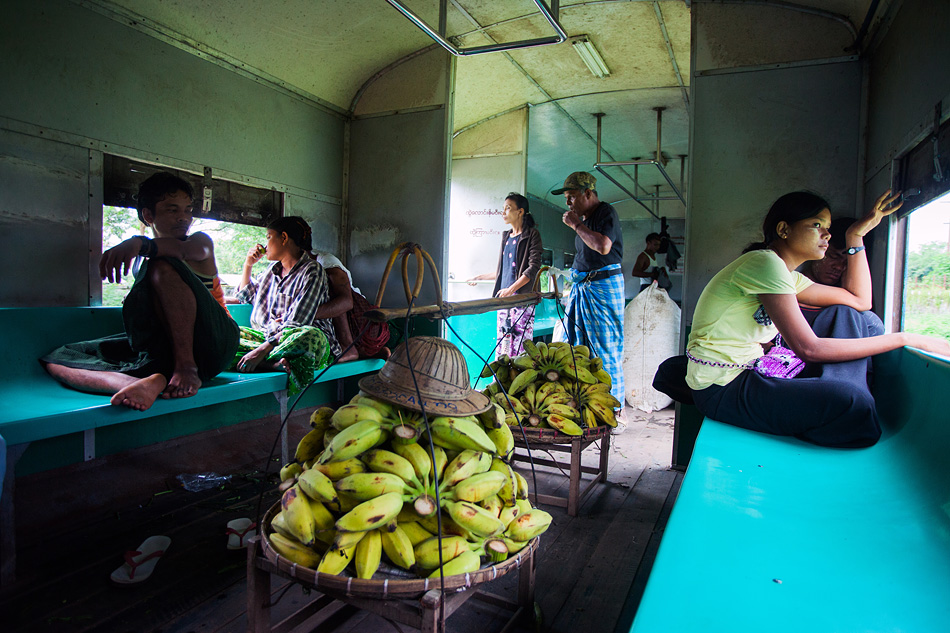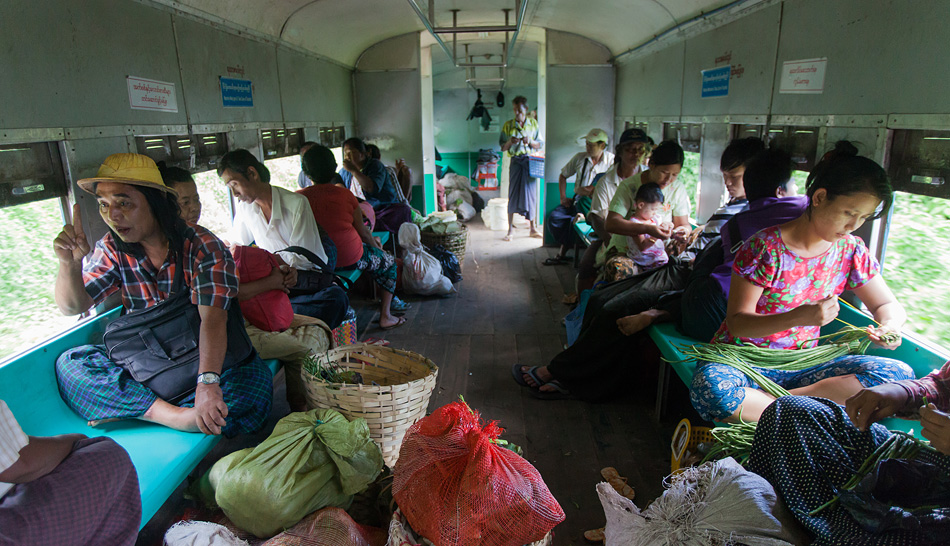Snap Stories: Photographing Yangon’s Circular Railway
Snap Stories is a monthly column I write for a travel magazine. ‘Photographing Yangon’s Circular Railway’ was published in January 2014.
I boarded Yangon’s circular railway with a lot of ideas and anticipations circling in my head. One of my self-imposed assignment in Myanmar, when I bought a ticket to Yangon was to photograph the everyday Burmese life. From preliminary research, I realized that one of the best places to see it unfold was the suburban train that touched through the markets and villages around Yangon. There is usually a bustling economic activity in a system that connects an urban center with its surroundings, and I expected it to manifest in front of me inside the circular train.
At Yangon’s Central station, where the train start’s its loop, the nearly empty train contained commuters heading to nearby stations and vendors hopping in and out selling savouries, fruits and betel leaves. We chugged through relatively unpopulated sections of Yangon that alternated between greenery, industrial areas and semi-urban populations.
Armed with the camera and seated on a bench in the general compartment, I offered friendly glances and hoped to strike conversations that would eventually turn into photography opportunities. It was my first day in the country and I was keen to make some connections before I fired away with the camera. The first person to respond to my smile was a middle-aged gentleman with pan-stained teeth speaking in broken English and inquiring my whereabouts. He walked past me quickly to find an acquaintance in another corner of the coach, while I tagged on to Hashim who was casting a curious glance at me from a seat in front. We talked–again in broken English as I stared at yet another set of pan-stained teeth–about life in Yangon, traders on the train and the townships that we passed through. Hashim played a guide’s role while I kept a watch on the occupants for anything that would interest the camera. There was no dearth of colours, such as the bright blue seats flanked against a green coach, floral tops of women and cut watermelons and black grapes for sale. But I was instantly alerted after half-an-hour’s ride, when a man entered the coach with a big load of yellow-green bananas. They instantly dominated the wide passage and prompted me to make a series of images.
The busiest hour on the train arrived once we reached a market area. The scene shifted suddenly from calm to commotion as a large number of villagers entered in with sacks of vegetables. They immediately busied themselves, either in conversations with neighbours or sorting the goods they had brought in. The coach was now full, packed with people on benches on either side and goods stacked randomly on the alley. This, to me, gave a wholesome and complete picture of how life can be on the circular railway. I positioned myself in a corner framing many images that tried to give a wholesome picture of happenings in the train.
In the three hours that I spent making a full circle, I exchanged smiles with many people, talked to a few and was even invited to get down and walk to a village with one of the passengers. I spent more time observing and making conversations than making pictures. And in the times when I was shooting, I tried to emphasize the atmosphere of the entire coach in the background while focusing on one or two important aspects – such as the big load of bananas or commuters keeping engaged in some activities.

